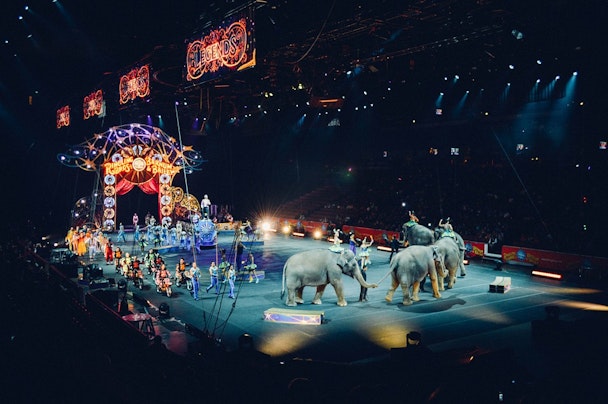Still the greatest show on earth? Why Super Bowl advertisers should take heed of Ringling Bros. closure
Last week, it was announced that Ringling Brothers Circus will soon cease operations after over 100 years in business. The owners cited the high cost of operations and the decline in ticket sales, which have made the circus “an unsustainable business.”

Credit: Pixabay
Many will find this sad. There was a time, not that long ago, when the “Greatest Show on Earth” was a much anticipated event in many towns across the United States, a spectacle people greatly looked forward to and enjoyed, given that entertainment was less accessible. You wouldn’t have to look far to find people in disbelief about the circus going out of business. It was THAT big.
Unfortunately, tastes change. Which means people’s appetites for entertainment and what they’re willing to spend on it change. Which means certain forms of entertainment are no longer viable forms of business and cease to exist after becoming essentially non-relevant.
Which brings us to the Super Bowl, the ad industry’s “greatest show on earth.”
Should those of us who’ve enjoyed the spectacle of the commercials as much as the games start to ready ourselves for its demise? There are a lot of indicators to suggest we should. And there are a lot of questions we need to ask ourselves.
Do people care about Super Bowl commercials anymore? Is the cost of doing business too high? Has the world moved on from a view-it-one-time spectacle (the lion-tamer putting his head in a lion’s mouth) to a daily headline-making spectacle (the President’s latest tweet)?
Ask any advertising professional and they may reference the much-publicized sound bite “Super Bowl is the day advertisers showcase their best stuff.” That’s debatable. Some do, but just as often, the commercials are underwhelming. If you look at advertising industry award shows as a better judge of “advertising’s best,” Super Bowl commercials are generally under-represented. They’re sometimes considered to be “great spectacle,” but rarely do they showcase new, noteworthy or groundbreaking concepts.
Another reason Super Bowl ads are no longer a “must see” is many expected advertisers aren’t participating anymore. Where have the big fast food companies, like McDonald’s, been? Or even KFC, Chick Filet, Wendy’s or Burger King? Many car companies opt out. Anheuser-Busch is the only beer company. Even the soft drink companies have pulled way back from the glory days.
Arguably, the most important reason Super Bowl ads are no longer the end-all, be-all: the format itself is viewed as “old.” CMOs need to be digitally savvy and seen as embracing the new economy and new mediums. CMOs likely notice their own kids don’t watch as much linear TV as they did themselves at the same age. Advertising generally pursues the young, and it becomes obvious to many that kids today watch things on their cell phones and iPads, rarely watching anything live.
Related to this is measurability. The advertiser who runs a pre-roll on the hot new cat video knows exactly how many eyeballs saw their ad. They can amortize the cost more easily, target the ad more easily via algorithm, and measure it’s effectiveness. And, brands can develop a highly effective campaign that meets many more of their specific buyers for a fraction of the cost of 30 seconds of time on the Super Bowl. Measurability is everything in advertising now; no matter how you jockey the viewership numbers of the Super Bowl, effectiveness is much tougher to measure.
P.T. Barnum, founder of the Barnum & Bailey Circus, which merged with Ringling Circus in 1919, when asked the secret of his success, said: “there’s a sucker born every minute.” Apparently that was true for over one hundred years, but even suckers eventually tire, or find other places to get suckered. How long will it take for big-spending Super Bowl advertisers to do the same? It’s hard to say. No one would have predicted even fifty years ago that many kids would rather sit in their rooms playing a video game than leave the house to watch a clown run around the Big Top, but it happened. The “Greatest Show on Earth” is the one the kids say is the greatest, not the one networks or executives label. That’s a business fact. These facts seem to suggest Advertising’s Big Top isn’t as big as it used to be but it’s more expensive than ever. That’s a formula that doesn’t sound too promising.
John Immesoete is chief creative officer of Epsilon

